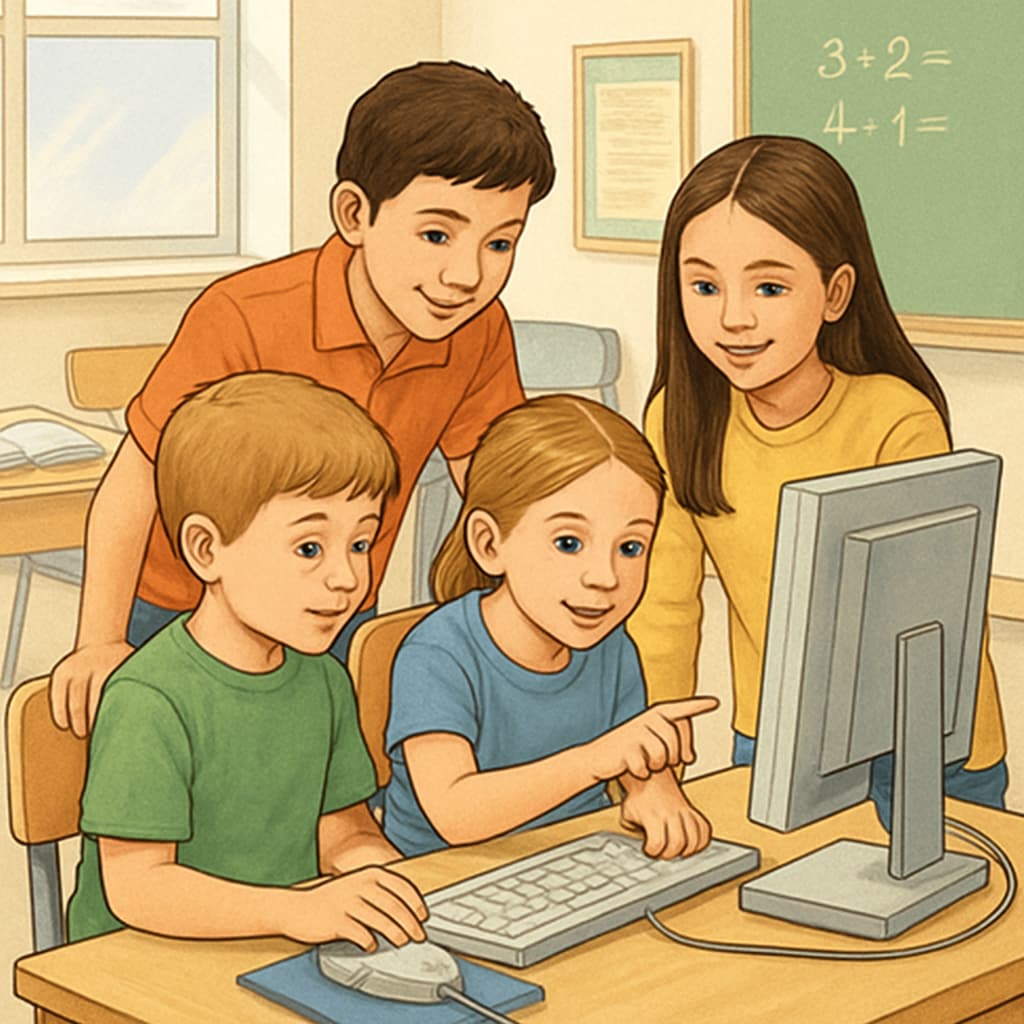Designing meaningful educational experiences that foster collaboration among students of different age groups opens new doors for learning and growth. In the context of a “Kindergarten Partner Program” and “Cross-Grade Activities,” incorporating structured “Computer Skills Learning” can encourage mutual support and skill-building between younger and older students. By pairing kindergarteners with fourth graders, educators can create a dynamic, engaging environment where both age groups benefit from each other’s strengths while developing essential social and academic abilities.
Why Cross-Grade Activities Are Valuable
Cross-grade activities offer unique benefits for both younger and older students. Kindergarteners often look up to older children as role models, while fourth graders gain confidence and leadership skills by mentoring their younger peers. This dynamic fosters empathy, patience, and communication skills on both sides. Additionally, these partnerships help bridge the gap between early childhood education and elementary learning, creating a continuum of support that enhances the overall school experience.
Incorporating technology into these activities, such as structured computer learning sessions, adds an extra layer of engagement. For example, kindergarteners can learn basic mouse and keyboard skills while fourth graders practice teaching concepts like drawing shapes or navigating a simple educational game. This collaborative approach ensures that technology enhances the learning experience rather than isolating students.

Creative Activities to Foster Interaction
To make cross-grade activities successful, it’s important to design tasks that account for the developmental differences between kindergarten and fourth-grade students. Here are some creative ideas:
- Storytime Collaboration: Pair students to create simple, illustrated stories. Kindergarteners can contribute drawings, while fourth graders help write and assemble the narrative.
- Shared STEM Challenges: Design easy engineering challenges, such as building a bridge with blocks or creating a paper tower. Teams can work together to brainstorm solutions and complete the task.
- Basic Coding Activities: Use beginner-friendly platforms like ScratchJr to introduce coding. Fourth graders can guide their younger peers in creating simple animations.
- Digital Art Projects: Encourage students to use computer tools to create collaborative art pieces, with older students teaching basic software navigation to their younger partners.
- Interactive Reading Sessions: Utilize e-books or interactive reading apps where older students can help their partners explore new vocabulary and concepts.
By integrating technology into these activities, such as using tablets or computers for art and reading, students gain exposure to digital tools in a supervised, cooperative setting.
Implementing Computer Skills Learning
In today’s digital age, it is essential to equip students with foundational computer skills early on. Cross-grade activities provide a perfect platform for this. Here’s a step-by-step guide to integrate computer skills learning:
- Set Clear Goals: Define what skills each grade level should achieve, such as learning to use a mouse for kindergarteners and practicing file management for fourth graders.
- Choose Age-Appropriate Tools: Use child-friendly software like ABCmouse for younger students and Google Docs for older ones to practice typing and file sharing.
- Pair Students Strategically: Match students based on personality and learning style to encourage effective collaboration.
- Encourage Reflection: After each session, have students share what they learned or enjoyed about working with their partner. This step reinforces the value of collaboration and learning.
Integrating computer-based tasks not only teaches technical skills but also enhances teamwork and problem-solving abilities. Moreover, it helps students view technology as a tool for creativity and learning rather than just entertainment.

Building Long-Term Connections
One of the most rewarding aspects of cross-grade activities is the relationships students build over time. By regularly participating in these programs, kindergarteners and fourth graders develop a sense of trust and mutual respect. These connections can positively impact their social-emotional development and make school a more inclusive and supportive environment.
Additionally, such programs foster a culture of mentorship within the school. Older students learn to take responsibility and practice patience, while younger students feel encouraged and supported. As a result, the entire school community grows stronger.
In Conclusion: Cross-grade programs like the “Kindergarten Partner Program” and structured computer skills learning provide an excellent opportunity for students to grow together. By designing creative, technology-infused activities, educators can ensure that both age groups develop essential skills while enjoying the process of learning. Ultimately, these partnerships help create a more collaborative, empathetic, and innovative learning environment for all.


